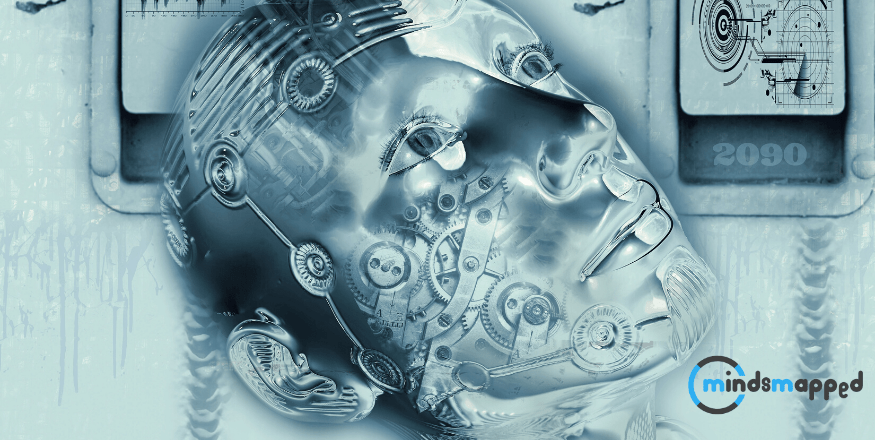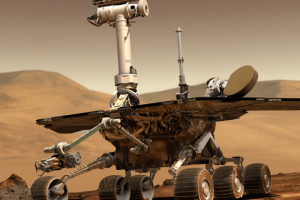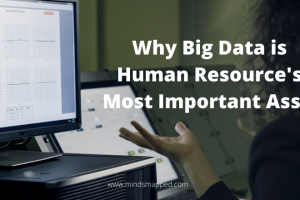
Why AI would be nothing without Big Data?
Artificial Intelligence and Big Data
The human brain is one of the most sophisticated machines in the world. It has evolved to its present state over thousands of years. As a result of evolution, we are able to understand cause and effect relationships and to make sense of nature’s inherent procedures. According to this understanding, we are able to invent mechanisms and machines to constantly improve our lives and to learn from nature. By way of instance, the video cameras we use are derived from the understanding of the human eye. Human intellect functions on the paradigm of sense, store, process, and act. Through the sensory organs, we collect information about our surroundings, store the data (memory), process the information to form our beliefs/patterns/links and utilize the data to act based on the situational context and stimulus. We are at a juncture of development where our race has found a way to store data. We are also currently hoping to devise machines that imitate the human brain in order to process information and to make conclusions that are meaningful and match human abilities.
Machine learning is a subfield of artificial intelligence. The goal of artificial intelligence is to create computer systems that work similarly to the human mind. As with machine learning, it learns how a human learns–through experience. From the early days of computer science, engineers and computer scientists explored the notion of intelligence. Even the idea of the Turing machine, a test developed by the computer scientist Alan Turing, hinted at the possibility of a computer gaining human-like intelligence. Taking a statistical and algorithmic approach to data in machine learning and AI has been popular for a while now. However, the capabilities and use cases were restricted until the availability of data together with processing speeds, which is named Big Data. The availability of Big Data has accelerated development and the growth of AI and machine learning applications. The primary goal of AI is to implement human-like intelligence in machines and to create systems that gather data, process it to create models (theory ), predict or influence outcomes, and ultimately improve human life. From heterogeneous sources in real-time, we have the availability of datasets with Big Data. This promises to be a foundation for an AI that really augments human existence.
The evolution from dumb to intelligent machines
The mechanics and machines that store and process these huge amounts of information have evolved over a period of time. It is noteworthy to consider how intelligent machines evolve. The evolution of computers was a very humble beginning, computers were dumb machines instead of intelligent machines. The fundamental building blocks of a computer would be the CPU (Central Processing Unit), the RAM (temporary memory), and the disk (persistent storage). One of the core components of a CPU is an ALU (Arithmetic and Logic Unit). This is the component that is capable of doing the basic steps of mathematical calculations together with logical operations. With higher and higher processing power, traditional computers evolved with these capabilities in place. However, they were dumb machines with no intelligence. These computers were extremely good at following predefined directions by using brute force and throwing exceptions or errors for scenarios that weren’t predefined. These computer applications could only answer questions they were supposed to solve. Even though these machines could process plenty of data and perform computationally heavy tasks, they would be always limited to what they have been programmed to perform. If we take the example of a self-driving car, this is extremely limiting. With a computer program working on predefined directions, it would be almost impossible to program the car to handle all situations, and the programming could take forever if we wanted to push the vehicle on all roads and in most situations. This limitation of classic computers to react to unknown or non-programmed situations leads to the question: Could a machine be developed to evolve and think as humans do? Bear in mind, once we learn to drive a vehicle, we simply drive it in a small number of situations and on certain roads. Our brain is quite quick to learn how to react to new circumstances and trigger several actions (apply breaks, turn, accelerate, etc ). This curiosity resulted in the evolution of computers into intelligent machines.
In the year 1956, the term artificial intelligence was coined. Although there were slow steps and milestones on the way, the last decade of the 20th century marked remarkable improvements in AI techniques. In 1990, there were significant demonstrations of machine learning algorithms supported by case-based reasoning and natural language comprehension and translations. Machine intelligence reached a major milestone when then World Chess Champion, Gary Kasparov, was beaten by Deep Blue in 1997. Ever since that remarkable accomplishment, AI systems have greatly evolved to the extent that some experts have predicted that AI will beat people in every endeavor.
Narrow AI
Most applications of artificial intelligence will be considered “narrow AI.” That’s a computer system designed to think like a person, but only for a narrow, specific task. An example of this is the IBM computer Deep Blue that played the game of chess. Other narrow AI systems are being developed, and several are already in use, such as Siri and Alexa, and self-driving cars. Narrow AI relies on machine learning. The ability to use these methods of learning allows engineers to create computer systems for a particular task without needing to develop very large computer applications with huge numbers of lines of code.
Deep learning is learning that is done with multi-layered neural networks. Inputs are weighted as the system learns, and relations between nodes are strengthened. The multi-layered systems utilized with deep learning are said to be”hidden” because they will interact with other nodes in the system, but not with the outside world through inputs and outputs.
General AI
General AI involves developing a general artificially intelligent system that can completely mimic the intelligence of a human being. This is a really difficult problem to resolve, and progress in this area has been slow. To be sure the concept is known, in this case, you would have a generally intelligent system that could learn and do anything. This is quite different from building an intelligent system that can play chess and approve or deny a loan application.
Big Data
Data are described as facts collected for reference or analysis. Storage mechanisms have greatly evolved with human development –sculptures, handwritten texts on leaves, punch cards, magnetic tapes, hard drives, floppy disks, CDs, DVDs, SSDs, human DNA, and more. With each new medium, we are able to save more and more data in less space. With the advent of the internet and the Internet of Things (IoT), data volumes have been growing exponentially.
The term Big Data was coined to represent growing volumes of data. Along with volume, the expression also incorporates three more features, velocity, variety, and value, as follows:
Volume: This represents the ever-increasing and exponentially growing amount of data. We’re now collecting data through an increasing number of interfaces between man-made and natural objects. For instance, a patient’s routine trip to a clinic today generates electronic data in the range of certain megabytes. An average smartphone user generates a data footprint of at least a few GB per day. A flight traveling from one point to another generates half a terabyte of information.
Velocity: This represents the number of data generated with respect to time and also a need to analyze that information in near-real time for some mission-critical operations. There are sensors that collect information from natural phenomena, and the information is then processed to forecast hurricanes/earthquakes. Healthcare is a great example of the velocity of information creation because analysis and action are mission-critical.
Variety: This represents variety in data formats. Historically, most electronic datasets were structured and fit into database tables (columns and rows). More than four-fifth of the data we create is not in a structured form. For example, voice data files, images, and video files. With Big Data, we are in a position to analyze the majority of datasets that are semi-structured and structured/unstructured.
Value: This is an integral part of big data. The data is only as valuable as its utilization in the creation of actionable insights. There is no debate that data holds the key to actionable insight; however, systems need to evolve quickly to be able to analyze the data, understand the patterns within the information, and, depending on the contextual details, supply solutions that ultimately create value.
Big Data and Artificial Intelligence
At the moment, the relationship between big data and artificial intelligence is focused on narrow AI. Consider big data as the information and AI as the mind. Big data feeds artificial intelligent systems. Data is the raw material for AI. Consider artificial intelligence in precisely the same way that a child learns in school. The child is subjected to a great amount of data over the course of his schooling. Big data is the exact same way. This is the information provided as learning material for artificially intelligent systems. This allows the AI system to learn so it can work independently later, the same way that after finishing their training a medical student learns and then works as an independent doctor. Think of big data as the books and lectures that the student reads to learn their craft and reads.
AI systems are flexible computing systems. When they see new information, they adapt to it and can alter their own behavior once they’ve been trained. Big data by itself is dumb. It’s just a collection of information, and no intelligence is related to that data until it can be analyzed as a raw data set is presented. It can include text, numerical data, photographs, videos, you name it. By itself, it’s nothing more than that. Big data could be processed, which means it will be fed to discover the patterns and connections that may exist in the data.
Without big data, AI has no value. AI techniques require data that is big to learn the skills. At the same time, we can say that large data would have no significance without the machine and, in particular, without AI. Without these tools, it wouldn’t be possible to detect the patterns inherent in the information. Collections of information would be taking up space on hard drives all over the world but not be very helpful.
To learn effectively, artificially intelligent systems should have the proper amount of data. The more data that an AI system can examine, the more accurate it will be when deployed on its own. This fact alone means that big data and intelligence are linked together. Before the era of data, progress in artificial intelligence was slow. Now, progress is rapid. You can think of big data as the nutrient that intelligent machines need to grow and develop. Without that nutrients, intelligent machines will stagnate. This is why the relationship between big data and artificial intelligence is significant and long-lasting.
As we’ve seen, intelligent machines are used with big data to address many issues. This includes detection, where an intelligent machine trained on big data determine whether fraud has occurred. Artificial intelligence may also help big data scientists by showing them patterns in the information they didn’t know were there, and it can also be used to do major work such as Bayesian analysis and graph theory. An example of analysis is predicting the future behavior of a client given their behavior, or the behavior of other clients with similar characteristics.
Final Thoughts on Artificial Intelligence and Big Data
In short, big data and artificial intelligence are used in an integrated manner. Information that is large is used to train the machine, to uncover hidden insights. At this juncture of evolution in intelligent machines, where we have systems that gather large volumes of data from different sources, along with machines that store these enormous data with lower resources, we can get information and insights from intelligent machines, that can improve quality of services rendered. Leveraging a combination of human intelligence, large volumes of data, and distributed computing power, we can create expert systems that can be used as an advantage to lead the human race to a better future. Leveraging a combination of large volumes of data, of intelligence, and distributed computing power, we can create expert systems that can be utilized as an advantage To lead the human race to a future that is better.



